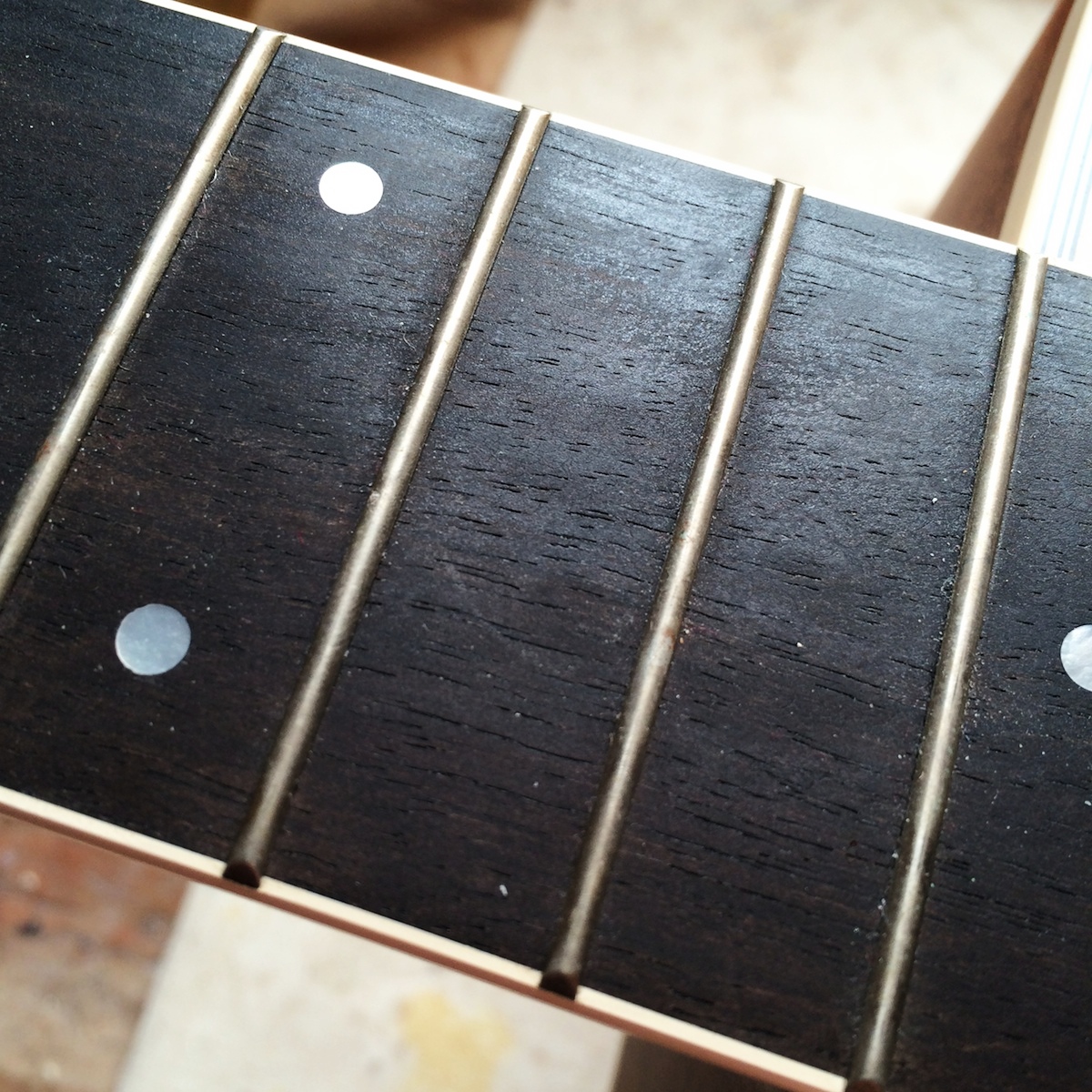What is an 'S-Shaped' Guitar Neck
From time to time I encounter an ’S-Shaped’ Neck. This means that you may well come across one too, so it’s good to know what the story is.
What is an S-Shaped Neck?
It’s a guitar or bass neck that has (usually) two humps.
It’s not that uncommon for any neck to develop a hump—sometimes called a ‘ski-slope’—at the last few frets (and there are some things that can aggravate this).
A second hump isn’t so common but it definitely happens. The dotted line in the exaggerated image below shows an imaginary string path. You'd have a hard time getting a clean-playing note all over this neck.
Usually, this second hump makes itself known around the third to fifth fret but it can wander a little either side.
Why are these neck humps a problem?
If your fretboard isn’t consistently flat along its length, then some spots will be lower than others. This means notes fretted in those lower spots will not be able to play cleanly and will buzz, or choke, against the higher frets farther along the neck.
No good.
What causes an S-Shaped neck?
My hypothesis is that its related to the way the truss rod works.
A recap on truss rods:
The neck has a curved channel cut in it. The rod is installed in here and, when the rod adjustment is tightened, it tries to straighten out and forces the middle of that channel up.
Great. Our truss rod works and counteracts the string tension. That’s what it’s supposed to do. Yay!
However, as it’s straightening out, I think it can bear against the rear of the channel near the ends of the rod. I suspect this applies pressure in the other direction and, over time, can pull that section of neck back.
When that happens, a hump around the 3rd to 5th fret seems a likely consequence.
Now, this is still just a completely unverified hypothesis right now. Any guitar playing engineers should feel free to drop me a line with their thoughts on this.
Anyway, my crackpot ideas aside:
How to Fix an S-Shaped Neck
I’m afraid it’s probably not a do-it-yourself job for everyone. At a minimum, we’re probably going to be talking a fret level to even out any height differences. A fret level removes a little metal from the tops of the frets until all are at the same level.
In the worst cases, however, we’re going to have to remove the frets and level the wood of the fingerboard itself. That’s what’s going on in the photo below.
When the humps are too large to get away with just a fret level, we need to apply our corrective action to the wood of the fingerboard and level that before installing new frets.
This photo was taken part-way though the levelling process. The higher parts (at the end of the neck and centered around the 5th fret) are being removed. When the fingerboard is level again, it can be refretted.
Can I prevent an S-Shaped neck?
Tough one. Probably not. I reckon it’s down to the construction of the guitar and the strength of the neck. The former you can’t do anything about and the latter you don’t know about until it’s happened.
Lighter strings, I guess, would mean the truss rod has to work less hard but, like I say, you don’t know this is going to be an issue until it’s an issue. While not completely uncommon, this problem isn’t the most regular in the world.
Essentially, I’m saying, don’t worry about it until you have to worry about it.
Philosophical yes, helpful no. Sorry. ;-)
This article written by Gerry Hayes and first published at hazeguitars.com












